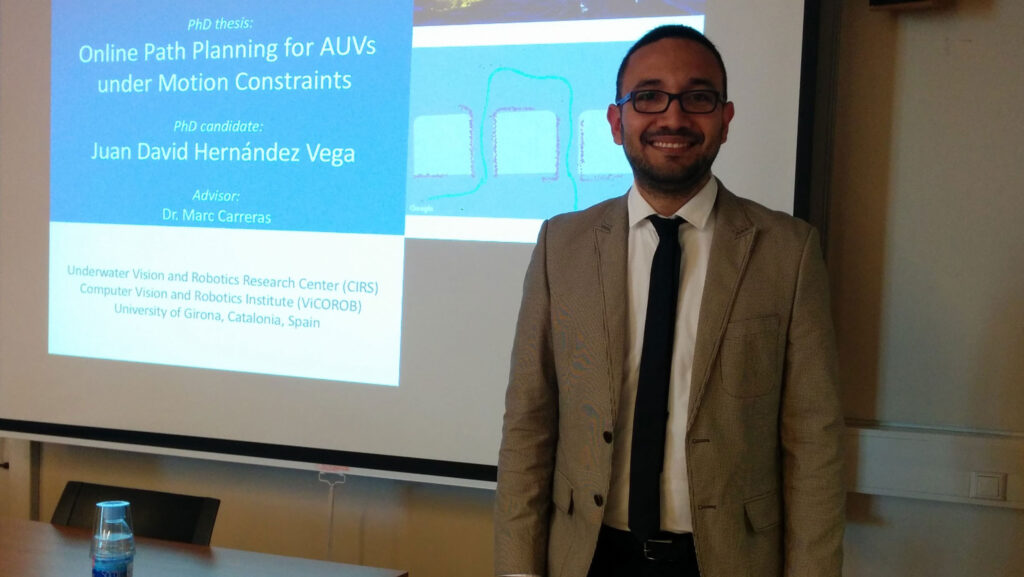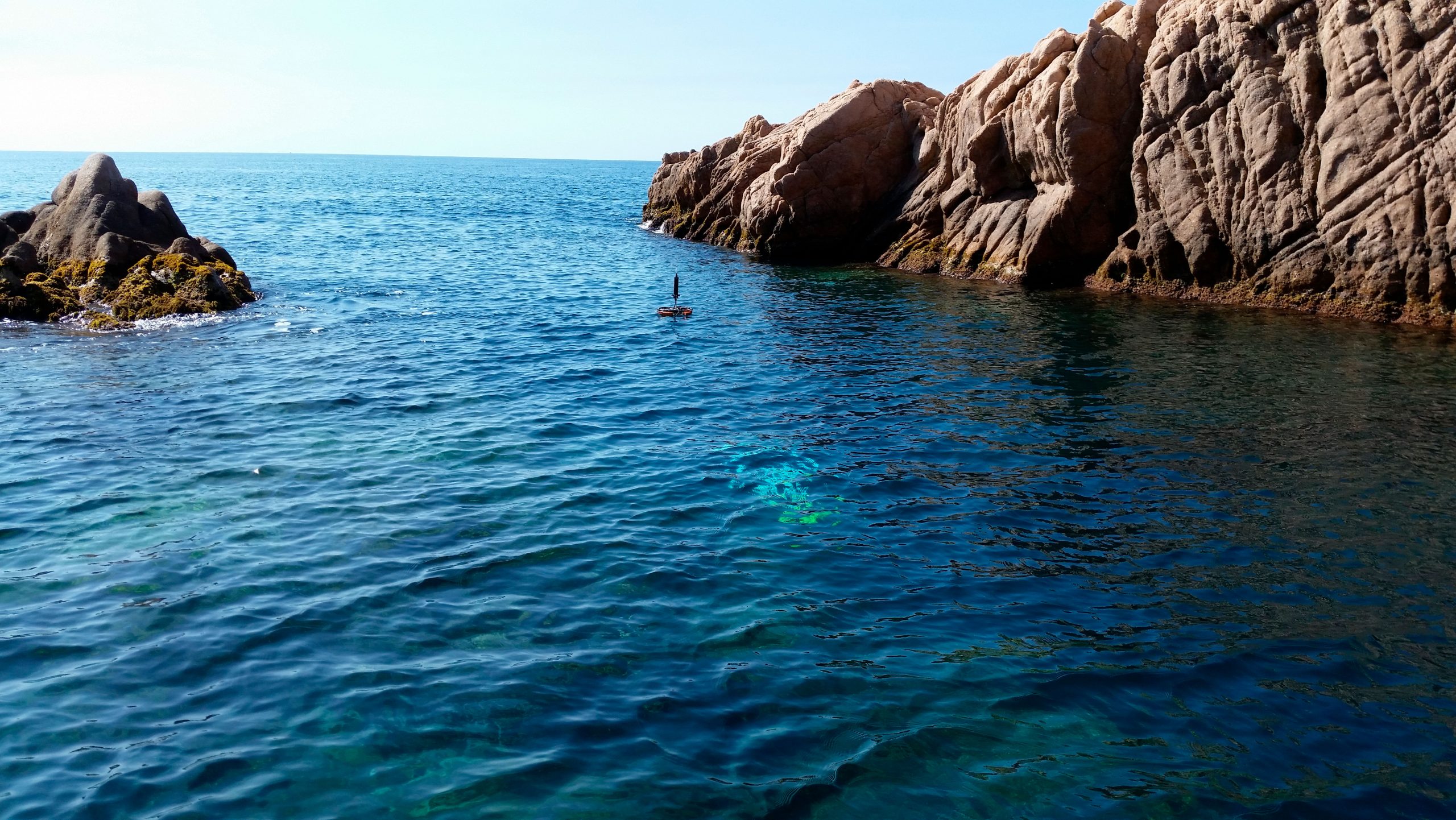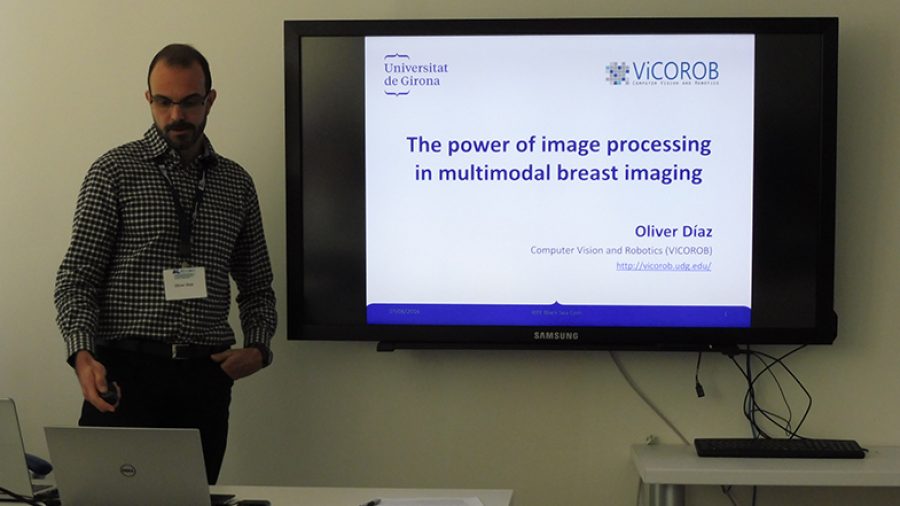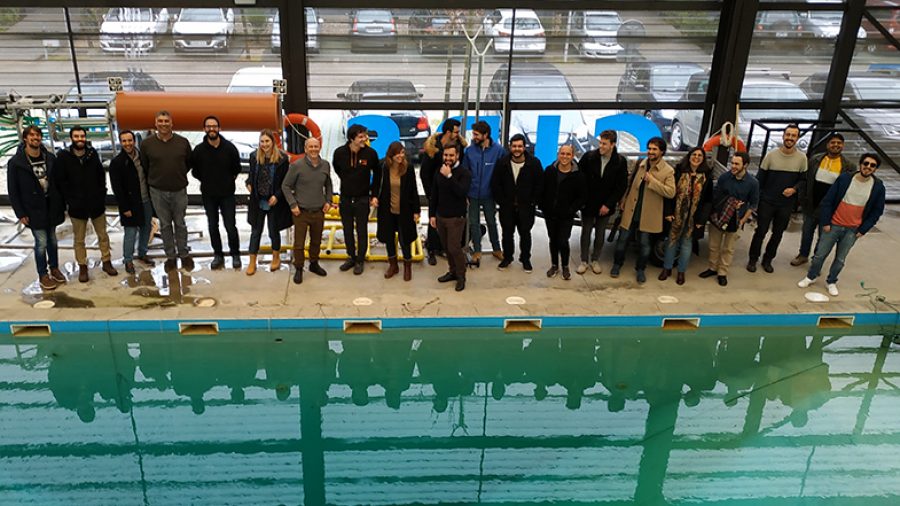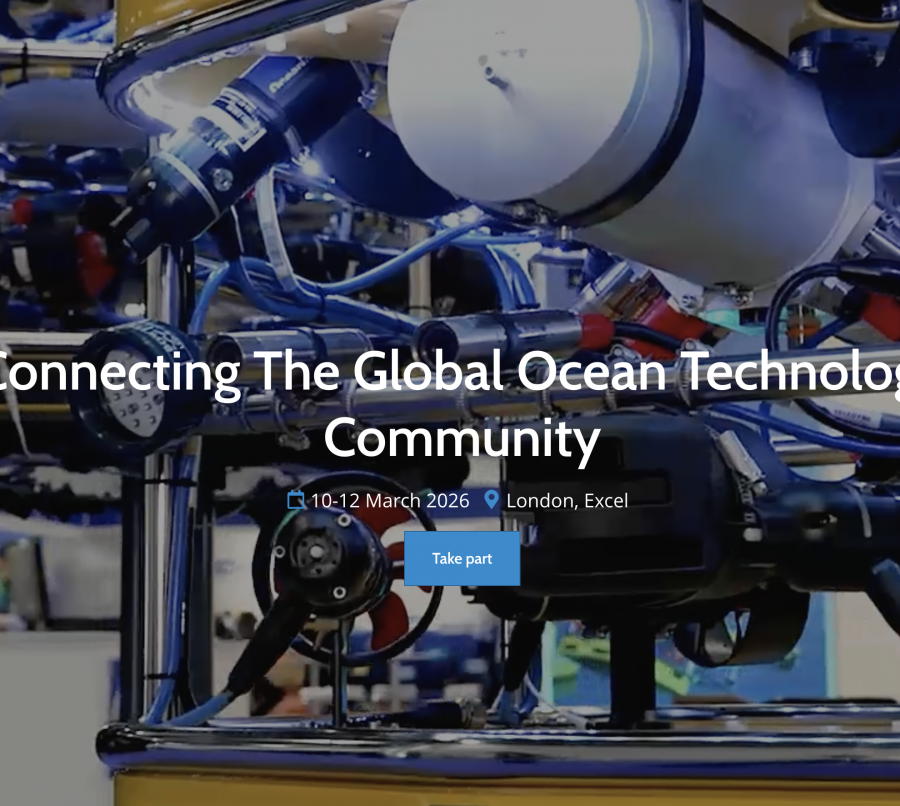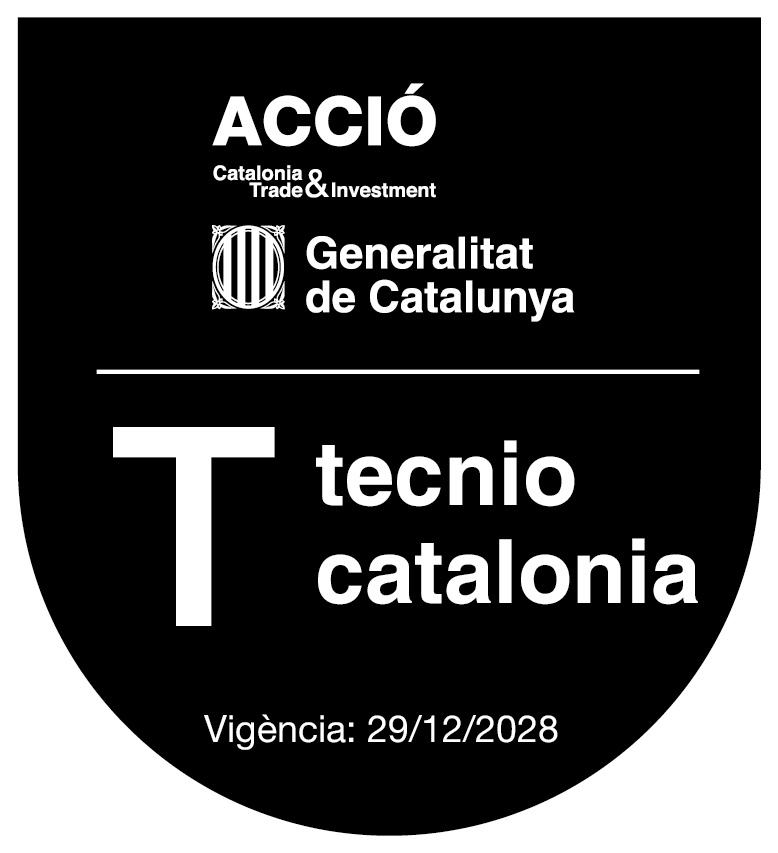Doctoral thesis “Online Path Planning for Autonomous Underwater Vehicles under Motion Constraints”
By Juan David Hernández Vega
Supervised by Dr. Marc Carreras
Abstract
Thesis submitted to the University of Girona in fulfillment of the requirements for the degree of Doctor of PhilosophySince their beginning in the late 1950s, the capabilities and applications of autonomous underwater vehicles (AUVs) have continuously evolved. Their most common applications include imaging and inspecting different kinds of structures on the sea floor as well as collecting oceanographic informa-tion: biological, chemical, and even archaeological data.
Most of these applications require a priori information of the area or structure to be inspected, either to navigate at a safe and conservative altitude or to pre-calculate a survey path. However there are other applica-tions where it’s unlikely that such information is available (e.g., exploring confined natural environments like underwater caves). In these scenarios, AUVs must operate in unexplored and cluttered environments, and there-fore are more exposed to collisions.
Although these AUV applications share some common requirements with other aerial and terrestrial robots (e.g., localization, mapping, vision, etc.), they are also different in significant ways. Navigating autonomously while conducting these type of tasks in underwater environments demands taking into account factors such as: the presence of external disturbances (currents), low-range visibility and limited navigation accuracy. Dealing with such constraints requires a path planner with online capabilities that can overcome the lack of environment information and the global posi-tion inaccuracy, especially when navigating in close proximity to nearby obstacles.
In this respect, this thesis presents an approach that endows an AUV with the capabilities to move through unexplored environments. To do so, it proposes a computational framework for planning feasible and safe paths online. This approach allows the vehicle to incrementally build a map of the surroundings, while simultaneously (re)plan a feasible path to a specified goal. To accomplish this, the framework takes into account motion constraints in planning feasible 2D and 3D paths, i.e., those that meet the vehicle’s motion capabilities. It also incorporates a risk function to avoid navigating close to nearby obstacles.
To evaluate the proposed approach in different real-world scenarios, a series of trials were conducted with the Sparus II and the AsterX AUVs, torpedo-shaped vehicles that performed autonomous missions. These ex-periments include simulated and in-water trials in different environments, such as artificial marine structures, natural marine structures, and con-fined natural environments.
